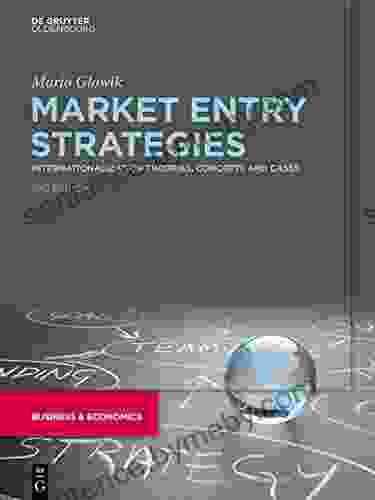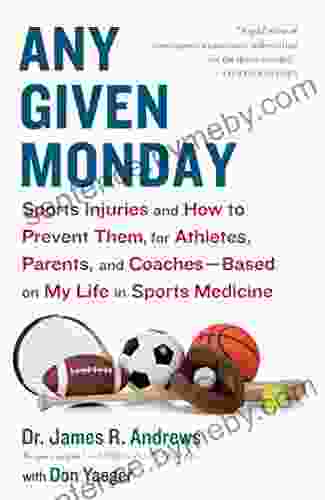Sports Injuries: Prevention for Athletes, Parents, and Coaches

Sports injuries are a common problem, affecting athletes of all ages and skill levels. While some injuries are unavoidable, many can be prevented by following proper training and safety guidelines.
4.4 out of 5
| Language | : | English |
| File size | : | 2735 KB |
| Text-to-Speech | : | Enabled |
| Screen Reader | : | Supported |
| Enhanced typesetting | : | Enabled |
| Word Wise | : | Enabled |
| Print length | : | 290 pages |
Common Sports Injuries
The most common sports injuries include:
- Sprains: Sprains are injuries to ligaments, the tough bands of tissue that connect bones together. They can occur when a joint is twisted or turned in an awkward way.
- Strains: Strains are injuries to muscles or tendons, the tough cords of tissue that connect muscles to bones. They can occur when a muscle is overstretched or torn.
- Broken bones: Broken bones are fractures in the bones. They can occur from a direct blow or from a fall or other impact.
- Dislocations: Dislocations occur when a bone is forced out of its normal position in a joint. They can be caused by a fall or other impact.
- Concussions: Concussions are injuries to the brain that can occur from a blow to the head. They can cause a variety of symptoms, including headache, nausea, and dizziness.
Risk Factors for Sports Injuries
There are a number of factors that can increase the risk of sports injuries, including:
- Overuse: Overuse injuries occur when a muscle or joint is used too much, without enough time to rest and recover. They are common in athletes who train too hard or too often.
- Improper technique: Improper technique can put undue stress on muscles, joints, and bones, increasing the risk of injury.
- Poor conditioning: Poor conditioning can make athletes more susceptible to injuries, as their muscles and joints are not strong enough to withstand the demands of their sport.
- Inadequate equipment: Inadequate equipment can also increase the risk of injury. For example, wearing shoes that are not properly fitted can lead to foot injuries.
- Previous injuries: Athletes who have had a previous injury are more likely to experience a similar injury again.
Prevention Strategies for Sports Injuries
There are a number of things that athletes, parents, and coaches can do to help prevent sports injuries. These include:
For athletes:
- Warm up before exercising: Warming up helps to prepare the muscles and joints for activity, reducing the risk of injury.
- Stretch after exercising: Stretching helps to improve flexibility and range of motion, reducing the risk of sprains and strains.
- Use proper technique: Using proper technique helps to reduce the stress on muscles, joints, and bones, reducing the risk of injury.
- Train gradually: Increasing training intensity and duration gradually helps to reduce the risk of overuse injuries.
- Listen to your body: If you experience pain, stop exercising and rest. Ignoring pain can lead to more serious injuries.
For parents:
- Encourage your child to warm up and stretch before and after exercise.
- Make sure your child is using proper technique when exercising.
- Help your child to develop a training plan that gradually increases intensity and duration.
- Encourage your child to listen to their body and rest when they need to.
- Be supportive of your child's efforts to stay healthy and injury-free.
For coaches:
- Teach athletes proper technique for all exercises and drills.
- Develop training plans that gradually increase intensity and duration.
- Monitor athletes for signs of fatigue or pain.
- Create a positive and supportive environment where athletes feel comfortable speaking up about injuries.
- Have a plan in place for dealing with injuries, including when to seek medical attention.
By following these tips, athletes, parents, and coaches can help to reduce the risk of sports injuries and keep athletes healthy and active.
4.4 out of 5
| Language | : | English |
| File size | : | 2735 KB |
| Text-to-Speech | : | Enabled |
| Screen Reader | : | Supported |
| Enhanced typesetting | : | Enabled |
| Word Wise | : | Enabled |
| Print length | : | 290 pages |
Do you want to contribute by writing guest posts on this blog?
Please contact us and send us a resume of previous articles that you have written.
 Book
Book Novel
Novel Page
Page Chapter
Chapter Text
Text Story
Story Genre
Genre Reader
Reader Library
Library Paperback
Paperback E-book
E-book Magazine
Magazine Newspaper
Newspaper Paragraph
Paragraph Sentence
Sentence Bookmark
Bookmark Shelf
Shelf Glossary
Glossary Bibliography
Bibliography Foreword
Foreword Preface
Preface Synopsis
Synopsis Annotation
Annotation Footnote
Footnote Manuscript
Manuscript Scroll
Scroll Codex
Codex Tome
Tome Bestseller
Bestseller Classics
Classics Library card
Library card Narrative
Narrative Biography
Biography Autobiography
Autobiography Memoir
Memoir Reference
Reference Encyclopedia
Encyclopedia James P Neelankavil
James P Neelankavil Jay Sokolovsky
Jay Sokolovsky Jane Bernstein
Jane Bernstein Tim Russert
Tim Russert Janine Waclawski
Janine Waclawski John Mcgranaghan
John Mcgranaghan Jonathan P Allen
Jonathan P Allen Jennifer Tzivia Macleod
Jennifer Tzivia Macleod Jan Kunz
Jan Kunz Mohanalakshmi Rajakumar
Mohanalakshmi Rajakumar Jane Yeadon
Jane Yeadon Jerome Rand
Jerome Rand James Fox
James Fox Jane Sullivan
Jane Sullivan Nancy B Kennedy
Nancy B Kennedy Louise Bates Ames
Louise Bates Ames Nadria Tucker
Nadria Tucker Jared Bhatti
Jared Bhatti Tionne Watkins
Tionne Watkins Jason Hutton
Jason Hutton
Light bulbAdvertise smarter! Our strategic ad space ensures maximum exposure. Reserve your spot today!

 Dwayne MitchellAnalytical Method Validation and Instrument Performance Verification: The...
Dwayne MitchellAnalytical Method Validation and Instrument Performance Verification: The...
 Leslie CarterUnveiling the Poetic Brilliance of Skinny Javaka Steptoe: A Literary Odyssey
Leslie CarterUnveiling the Poetic Brilliance of Skinny Javaka Steptoe: A Literary Odyssey
 Samuel BeckettThe Inside Story Of The Cia Final Showdown With The Kgb: A Gripping Tale Of...
Samuel BeckettThe Inside Story Of The Cia Final Showdown With The Kgb: A Gripping Tale Of... Al FosterFollow ·10.6k
Al FosterFollow ·10.6k Bobby HowardFollow ·3.6k
Bobby HowardFollow ·3.6k Francis TurnerFollow ·7.6k
Francis TurnerFollow ·7.6k Jaylen MitchellFollow ·2k
Jaylen MitchellFollow ·2k Willie BlairFollow ·5k
Willie BlairFollow ·5k Billy FosterFollow ·19.3k
Billy FosterFollow ·19.3k Tyler NelsonFollow ·2.8k
Tyler NelsonFollow ·2.8k Matt ReedFollow ·10.6k
Matt ReedFollow ·10.6k

 Franklin Bell
Franklin BellHow Businesses Can Thrive In The New Global Neighborhoods
The world is becoming...

 Rob Foster
Rob FosterCard Manipulations Volume 1: A Masterclass in Deception...
Unveiling the...

 Enrique Blair
Enrique BlairUnveil the Secrets of Card Manipulation: Dive into "More...
Step into the captivating world...

 Jamal Blair
Jamal BlairComedy Fillers 200 Quips One Liners Jean Hugard
Unlock the Secrets of...

 Chase Simmons
Chase SimmonsUnlock Financial Independence: A Comprehensive Guide to...
In a world where financial security seems...

 Dion Reed
Dion ReedUnveiling Global Market Entry Strategies: A Comprehensive...
Global Market Entry Strategies:...
4.4 out of 5
| Language | : | English |
| File size | : | 2735 KB |
| Text-to-Speech | : | Enabled |
| Screen Reader | : | Supported |
| Enhanced typesetting | : | Enabled |
| Word Wise | : | Enabled |
| Print length | : | 290 pages |






